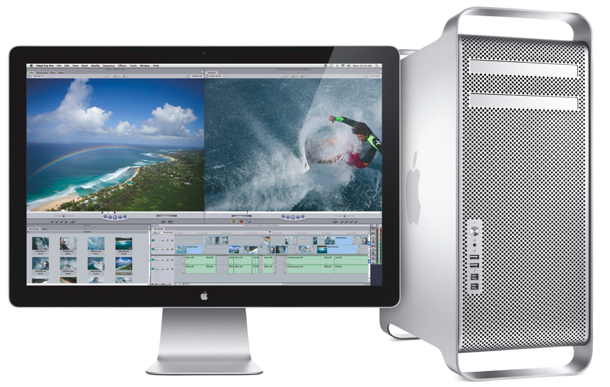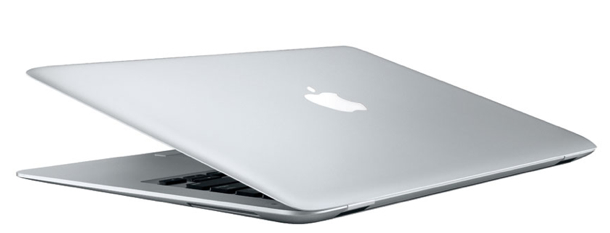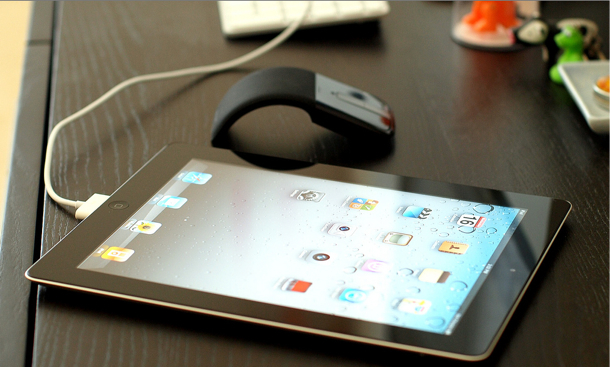It doesn’t take a rocket scientist to figure out that Apple’s products have a somewhat odd pricing structure. But why is this so? For a company that has prided itself on keeping things simple, they certainly have created a complex situation for consumers. Where do you even begin?
In order to illustrate the differences in prices, I created a graph that charts out the prices of Apple’s primary computing products (not including the iPhone/iPod Touch). I decided to only use the base models of each product, as to not confuse anyone even further.

This is what I’ve discovered.
Some Reasonable Thinking
The iPad 2 and the Mac Pro are the two most sensibly priced devices that Apple has. Interestingly, they are also on completely different ends of the pricing model. The iPad 2 has a price of $499 while the Mac Pro has a price of $2,499 — a $2,000 difference. But it makes sense.
The iPad 2 has become a standout in that it is one of the cheapest computing products that Apple offers. But it is also different in that it is not by any means a traditional computer; it is a tablet. As such, it should not be priced as a computer. Therefore, the $499 price makes sense.

Then there is the Mac Pro. It is the beefy, bulky, extravagant beast of a machine that only the most technical users would ever dare purchase. It’s purpose is simple: it provides raw computing power. It is the grandaddy of all Apple products, and it means business. It is also $1,100 more than Apple’s base Macbook Pro. But the pricing, again, makes sense.
The problems only begin to rear their nasty faces when you begin comparing traditional notebooks and desktops with each other. Needless to say, it took awhile to compare everything.
Unreasonable
Let’s begin with the Mac Mini. It is priced at $699, and it has long been considered the multimedia PC for Apple fanatics. It offers a 2.4GHz Intel Core 2 Duo processor, 2GB RAM, and a 320GB hard drive. You buy one of these, attach it to your HDTV, and you enjoy watching content from it. The concept is simple, and it works really well.
But when you consider that the Macbook offers nearly identical features — 2.4GHz Intel Core 2 Duo processor, 2GB RAM, 250GB hard drive — to the Mac Mini, and then has the added benefit of being portable, things quickly become confusing. Why not purchase a Macbook instead of a Mac Mini? You can set the Macbook off to the side, run a wire to the television, and viola — mobile entertainment! And it’s only $200 more.
However, if you are willing to do that, you also must keep in mind the Macbook Air. The latest incarnation of the Air is $999, which is also the same price as the aforementioned Macbook. It offers even more portability at the only expense of a 1.4 GHz Core 2 Duo processor and smaller screen. Is the Macbook Air worth the slight reduction in size and speed? Is it? I believe it is.
But these are the only situations you have to worry about if your budget is $1,000. If you are willing to spend only $200 more, things become even more complicated. (Yes, I know that the final cost is still very expensive.)

Let’s start with the Macbook Pro. The base model starts at $1,199, and it is a pretty good deal when compared to the Macbook, but it doesn’t seem as much so when compared to the Macbook Air. You get a speedier experience with the Macbook Pro, but the increase in power over the Macbook Air is negligible. It’ll get things done, sure, but if you really want to do some heavy lifting with the Macbook Pro, you will want to upgrade to a higher-end version. I’m talking about the 15-inch version, in particular. So the existence of a 13-inch Macbook Pro is already in question. Of course, some might justify a purchase of the 13-inch Macbook Pro, but I’d have to recommend purchasing a Macbook Air, unless you are willing to spend extra to get a higher-end Macbook Pro that features better graphics, improved processing power, and a larger screen.
And then there is also the iMac, which starts at $1,199. It is actually seems like a very good deal for the base model, but, again, if you want power, you’ll have to upgrade to a better version. However, if you upgrade to a 15-inch Macbook Pro, you’ll already have adequate power and an experience that is comparable to the iMac. And, again, the Macbook Pro is actually portable. So this puts the existence of the base iMac into question — you purchase get a 27-inch iMac for $100 less than the 15-inch Macbook Pro.
And this still doesn’t factor in all of the higher end models that are offered with the iMac, Macbook Pro, and Macbook Air, which further complicates things. Some of the base models make sense: the Macbook Air makes plenty of sense for those who are wanting a cheap, portable netbook. The 15-inch Macbook Pro also makes sense for those who want a beefier notebook — it is, in my opinion, the only worthwhile upgrade from a Macbook Air. Finally, the iMac makes sense for a desktop solution, but it is difficult to compare it to other Apple products, especially when considering how much more expensive upgrades are for the iMac. (And then there is the argument that a mobile experience is significantly better than a desktop one.)
What we are left with is a whole mess of confusion. Sure, it might not be difficult for everyone, as many people already have in mind what they want. But if you are on the edge about purchasing an Apple computer, all of these potential decisions can put off some people. It’s more complicated than it should be.
I do, however, have a few suggestions for Apple to sort this out.
How Apple Should Fix It
The first fix is obvious: the Macbook has to go. It has to die, and it has to die soon because it is one of the largest sources of confusion in the current lineup. It competes with the Macbook Air and the base Macbook Pro. But purchasing a Macbook at this point doesn’t make much sense at all. If you want a cheap notebook, you’ll probably also want a light notebook, and that is where the Macbook Air comes in. But if you do want a more powerful notebook, the Macbook Pro (preferably the 15-inch version) is the logical decision.
The next thing that needs to be done is a price realignment of the Macbook Pro lineup. The 13-inch version is priced well, and it should stay as it is (yet the graphics could use a significant boost), but the 15-inch version is pushing it; don’t even get me started on the 17-inch version. The 15-inch version should be priced around $1,500 and the 17-inch version should be around $2,000.
The iMac’s base price is fine, but the cost to upgrade it is also drastic. There should be more reasonable pricing for upgrades. Paying $2,000 for the high-end iMac is a bit silly for all but those who are investing in business products. But paying for the low-end iMac seems a bit off because of the increased value you would receive from a middle-of-the-line Macbook Pro. (Not to mention that it also seems likely that a Macbook Pro would keep its value better than an iMac, although I can’t confirm that.) Also, the processors for iMacs are in dire need of some upgrades.

The Macbook Air is fine as it is. It also offers a great value for the 13-inch upgrade at $1,299. The 11-inch Macbook Air should officially replace the Macbook. It is the only option, in my opinion, that should be considered for the cheaper computing solution.
Finally, it might not hurt to drop the Mac Pro’s pricing by a hundred or two dollars. But considering that I will never buy one (and that big businesses probably are), maybe Apple is fine with the pricing as it is.
So, why am I complaining about a company who is pulling in billions of dollars per year? Well, it’s for the benefit of the consumer. Simplifying the pricing and offering fewer product options would go a long way in making the buying process easier on consumers. And since Apple is all about the consumer, this is the logical way to go.
